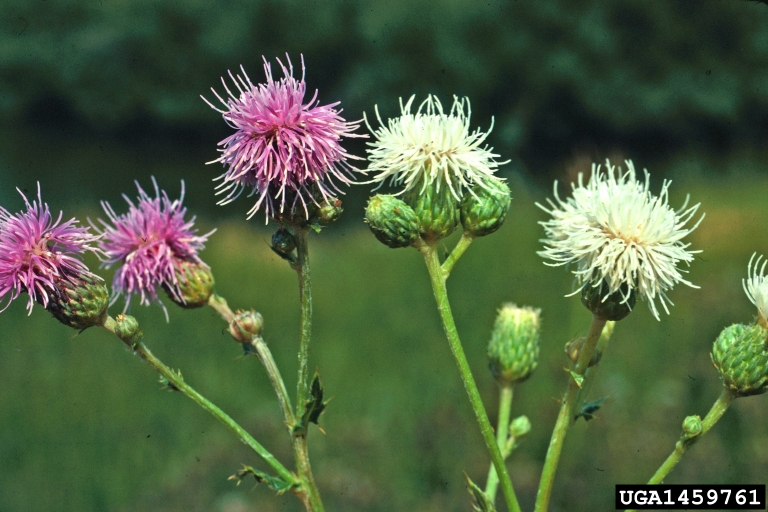Canada Thistle

Steve Dewey, Utah State University, Bugwood.org
Common Name: Canada thistle
Scientific Name: Cirsium arvense
Origin: Europe
Description
The Canada thistle is a broadleaved weed with a hairy spine that grows to 2 to 5 feet in height. The plant’s oblong leaves are dark green and irregularly shaped with spines on the tips. Flowering occurs from June to November, producing small, flask-shaped flower heads; the color of these flowers ranges from white, pale blue, purple and rose-purple.
Habitat
This invader is often found in overgrazed pastures, old fields, waste places, fence rows, and along roads and stream banks.
Threat
Once this plant is established, it grows rapidly and replaces native plants. It can be particularly harmful to agricultural fields, significantly reducing crop yield.
Management
Cutting, plowing, and cultivating is the most effective way to control the spread of the Canada thistle. Repeated mowing and cultivation helps weaken the plant and prevents seed production. For large infestations, using herbicides is most effective.
Distribution: View Map
The Canada thistle is found throughout most of the United States and is present in the FL-PRISM.

